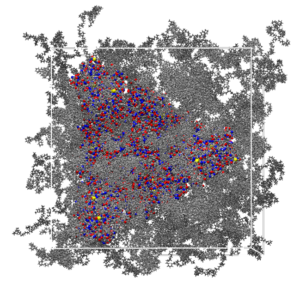Many chemicals, small particles or airborne diseases create severe health problems when inhaled. Certain gases are more harmful than others, but even the more inert substances can be dangerous in certain conditions. Respirator or surgical masks are the first line of defense against harmful airborne particles and gases by filtering out substances in the air that cause injury, disease, cancer, or death. This includes airborne diseases like the COVID-19 virus.
The Challenge
Every workplace dealing with hazardous materials or providing a hazardous environment has protective policies in place to ensure the safety of everyone working there. This holds especially for people working in hospitals, where surgical masks provide further submission of airborne diseases. Surgical masks and respirators work by providing a filter material, which interacts either mechanically or chemically with the particle or gas to be filtered. Often this filter material is a porous material, with a particular pore size to filter particles of a given size. Also, physical interaction of the hazardous material with the filter has a major impact on the efficiency of the filter process.
The Work
Digital models of various porous filter materials have been constructed. These include several hydrocarbon polymers like polyethylene, polypropylene, polystyrene but also chemically active filters like carbon black. Pores of a specific size have been generated, and the interaction of hazardous material with the filter material carrying the pore has been studied Suggestion for functionalizing the pore material has been made based on the type of the observed interaction. Particles studied were different nanoparticles, including several proteins, amongst them also the spike protein of the COVID-19 virus.
The dynamic behavior of the hazardous guest molecule was then studied dependent on the composition and size of the polymer pore with a special focus on the nonbonded interaction energy.
The Results
Several different porous filter polymers interacting with hazardous nanoparticles and proteins under various temperature conditions were simulated, and very good performing filter materials were identified. Suggestions for improving the materials were made based on the observed interaction energy. The simulated interaction energy is a property, which experimentally is not observable, and design enhancements were suggested based on these simulated properties. The Figure 1. below shows the COVID-19 spike protein in a polyethylene pore, water molecules are not displayed for clarity.

